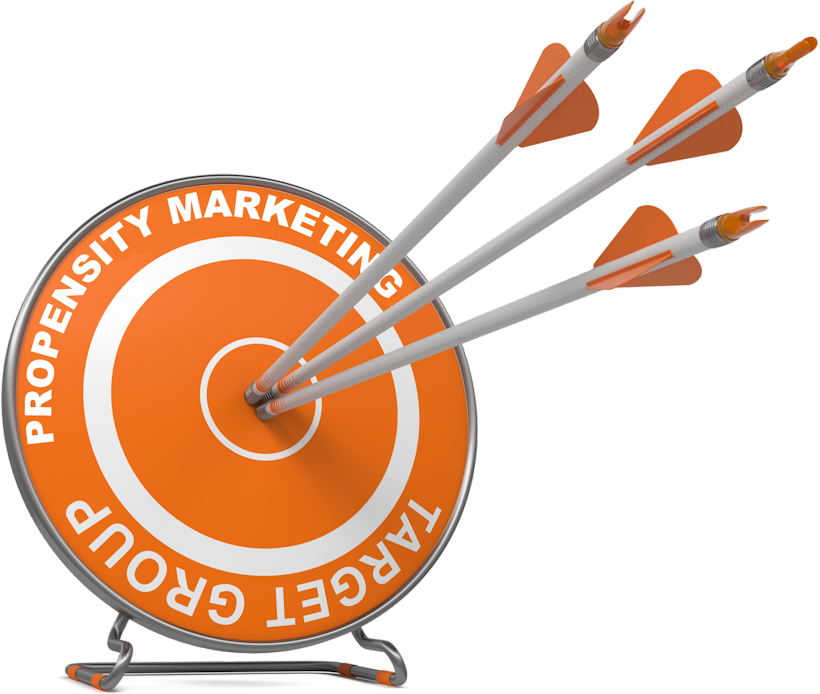Businesses and consumers are constantly engaged in theater-of-the-absurd role playing. The Britannica website explains, “Humankind in this view is left feeling hopeless, bewildered, and anxious.” Why is the relationship between businesses and consumers so absurd? Primarily because each group talks past each other while assuming they are engaged in a fruitful dialog. Businesses need to expose their products and services to the public, genuinely believing they will be of value to consumers. Consumers, on the other hand, constantly complain about being bombarded with advertisements (even while acknowledging many of their purchases are a direct result of learning about a product or service through an ad). The staff at Conquest Graphics describes the situation this way:
“Businesses know the importance of getting the right message to the right people. Yet they are constantly marketing to the wrong audience which is wasting them so much time and money that they could be putting into reaching the ones who are most likely going to act in their favor.”[1]
Over a century ago, John Wanamaker, the late department store magnate, lamented, “Half the money I spend on advertising is wasted. The trouble is I don’t know which half.” In an effort to bring a little more sanity to the situation, businesses have turned to targeted marketing. Now, targeted marketing is coming under attack.[2] One of the primary reasons for this scrutiny is that companies have not always used and protected personal data in ways consumers expected that data to be used and protected. Consumers get particularly upset when they learn companies are buying or selling their data for marketing purposes. As a result, many companies are now relying more heavily on first-party data (i.e., data collected directly from customers — generally with their permission). This first-party data can then be analyzed to identify consumer propensities (i.e., analyze past behaviors in order to make predictions about future behaviors).
The Basics of Propensity Marketing
Businesses know that the best customers are repeat customers. They also know that not all customers have equal lifetime value. The Qualtrics staff explains, “Customer lifetime value is the total worth to a business of a customer over the whole period of their relationship. It’s an important metric as it costs less to keep existing customers than it does to acquire new ones, so increasing the value of your existing customers is a great way to drive growth.”[3] Propensity marketing is all about finding consumers with the potential a high lifetime value. The staff at Digital Media Solutions (DMS) explains, “Propensity marketing is an approach to marketing that focuses on engaging consumers with the greatest propensity to take a desired action. By targeting consumers who are most likely to convert, propensity marketing has the potential to reduce media spend, boost conversion rates and improve campaign ROI.”[4]
According to the DMS staff, “Advertisers that have massive first-party data sets may be able to rely solely on their own data sets for complete consumer profiling and targeting.” And, as buying and selling of data sets comes under greater scrutiny, first-party data sets will undoubtedly become more important in the years ahead. Currently, however, the DMS staff explains, “Propensity marketing requires the analysis of multiple data sets.” Those data sets include:
• First-Party Historical Data: “Historical data helps identify the best customers, defined through conversions or retention, from a prior time period.”
• Third-Party Data Sets: “Often, third-party demographic and behavioral data overlays are used to learn more about the customers with the highest propensity to convert.”
• Second-Party Data Sets: “Second-party data sets are typically used to help with media targeting. These data sets match consumer segments with their lookalikes across digital channels.”
Analyses of those data sets take place in a propensity model, like the Enterra Shopper Marketing and Consumer Insights Intelligence System™. Chris Hemick, Senior Director, Marketing at Alliant, explains, “Propensity modeling is the process of identifying consumer segments with a strong likelihood of taking a desired action based on their predicted tendencies. The goal is to make each ad impression more effective and ultimately drive campaign ROI higher.”[5] Data analytics, of course, isn’t the end game. Hemick explains, “Once the propensity segments have been identified, you’ll have to decide how to strategically activate and communicate with each, and when.”
Implementing Propensity Marketing
The staff at integrate.ai reports, “Propensity modeling dates back to 1983 (and its logical extension, uplift modeling, to 1999), but it’s only in the last few years that machine learning has unlocked its potential.”[6] They add, “Good marketing teams will extend their propensity models to encapsulate the incremental impact of being targeted and only target those people for whom the incremental response is better.” The caveat with any targeted marketing scheme is that hyper-personalization can easily slip across the creepy line. When the line is crossed, company reputation is often the first casualty — and reputations are difficult to recover.
The integrate.ai team writes, “For a propensity model to be truly effective, it has to be dynamic, productionized, scalable, and able to demonstrate ROI.” They go on to discuss each of those qualities:
• Dynamic. “Great models change over time as new data becomes available so that they can become smarter, more accurate, and evolve with underlying trends in the data. For that reason, it’s important to have a data pipeline and feedback loop that you can use to retrain your model on a regular basis.”
• Productionized. “Dynamic modeling requires a robust data pipeline for regular data ingestion, retraining and validation, and deployment. Great models will deliver predictions into business processes so they are understandable and actionable (often in real time), and will measure and evaluate model performance over time.”
• Scalable. “At many companies, models are built for use in a single campaign and then abandoned. Alternatively, the company might take the time to build a new model for each of its campaigns. Neither of these options is scalable. Effective propensity models have to be capable of producing large numbers of predictions and they need to be able to be easily adapted across similar scenarios elsewhere in the business.”
• Demonstrate ROI. “The best models don’t stop at propensity. Instead, they help you determine if the return you’ll derive from getting a prospect to take a desired action merits the investment you’d need to make. They should help you optimize your sales and marketing funnel to drive the greatest efficiency possible.”
Concluding Thoughts
Marketing expert Shanelle Mullin (@shanelle_mullin) observes that propensity models can be used for other purposes than finding consumers likely to buy your product or service — although that is the most common use of such models.[7] She describes three valuable propensity models that companies can leverage beginning with the propensity-to-buy model.
• Propensity to buy or convert. “How likely are visitors, leads, and customers to make a purchase or convert to the next step of the funnel? Those who have a lower propensity score need more incentives than others (e.g., you might offer a higher discount if you’re an ecommerce store).”
• Propensity to unsubscribe. “How likely are recipients, leads, and customers to unsubscribe from your email lists? To those with a higher propensity score, you might try reducing the frequency of emails or sending a special offer to reinforce the value of remaining a subscriber.”
• Propensity to churn. “Who are your at-risk leads and customers? If they have a high propensity score, you might experiment with in-product win-back campaigns or assign account concierges to reconnect them with your core value proposition.”
She concludes, “Propensity modeling is not prescriptive. Knowing that a group of leads has a higher propensity to convert alone is not particularly valuable. What’s valuable is combining that knowledge with optimization know-how to run smarter, more targeted experiments and extract transferable insights.”
Footnotes
[1] Staff, “What Is Propensity Mailing and How Does It Work?” Conquest Graphics Blog, 5 January 2021.
[2] Stephen DeAngelis, “Will Targeted Marketing Blow-up in 2022,” Enterra Insights, 7 March 2022.
[3] Staff, “What is customer lifetime value (CLV) and how to measure it?” Qualtrics.
[4] Staff, “What Is Propensity Marketing?” Digital Media Solutions.
[5] Chris Hemick, “Propensity Modeling for Marketing,” Alliant Blog, 8 January 2021.
[6] Staff, “Here’s What You Need to Know About Propensity Modeling,” integrate.ai blog, 28 August 2018.
[7] Shanelle Mullin, “Propensity Modeling: Using Data (and Expertise) to Predict Behavior,” CXL Blog, 25 September 2020.





